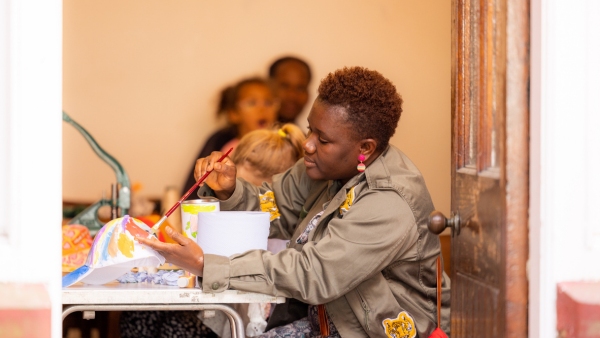The question ‘how do we meet society's need for care ?’ has emerged as one of the most important and intractable we face. We need to see it as a challenge not just for policy makers or care professionals but for society as a whole and for the values and capabilities we need to thrive in the coming era.
On Monday we had an important, and in my view welcome, announcement by the Coalition, of its response to the Dilnot Commission . It is true that the new policy will not be implemented for four years and that in relation to the overall problem of social care it will only offer some help to some people, but it does at least provide a framework which can subsequently be built upon (this is often the best way to introduce policy change).
Today there is (yet) another expose of poor care standards. In this case it is the home care services and their commissioners and providers in the frame .
I am also told that on Friday the ONS will be publishing an estimate of the total value of informal care, something that will no doubt highlight how little support unpaid carers feel they receive from the state and wider society.
Fundamentally, the problem is simple: whether we are talking about children, adults or elders there is not enough free and affordable care to go around. It is a very specific example of what I have termed the social aspiration gap – separating the society we would like to live in from the one resulting from our current behaviours and attitudes.
In effect we have silently abandoned the welfare state’s promise to offer universal decency and collective insurance against predictable risks. One economic consequence is that among over fifties and mothers we have lower employment rates than many other countries and this is drag on economic performance. This problem is leading to millions of our fellow citizens suffering today and without concerted societal action things will only get worse.
There are a thousand and one ideas and initiatives to close the care gap and we have discussed many of them here at the RSA. For example, Circles of Care – which was developed by Participle is often quoted and I am a great fan of Shared Lives, but it is proving hard to scale up these and make a substantial difference to the underlying problem.
Practical innovation must continue but alongside it, indeed supporting it, we need a much bigger debate about care and society. We tend to see the care crisis as the result of the interaction of economics (public spending and market supply) and demography (ageing and the birth rate), but there are surely other factors at play.
Whatever pious words we utter, care (both formal and informal) is a low status activity. Both interpersonally and collectively we find it hard to talk honestly about the experience of caring as something which combines great rewards and satisfaction with drudgery and resentment. On Friday the ONS will come up with a big figure for the value on informal care but it is not a value you will see reflected in the national accounts. This is not unrelated to the fact that caring is seen as ‘women’s work’ and also our ambivalence about whether the child care and elder care is primarily a familial or a social responsibility.
Talking more honestly about care, enhancing our ability and willingness to provide care – not just to loved ones but as part of a wider social effort, using care – rather than the more nebulous ‘well-being’ - as a prism through which to re-examine the way we think about economic and social value: All this is necessary.
I am planning to make the care society the focus of my annual RSA lecture, and tomorrow I will float a practical idea I have to improve public attitudes and develop care capabilities.
Related articles
-
Open RSA knowledge standards
Alessandra Tombazzi Tom Kenyon
After investigating ‘knowledge commons’, we're introducing our open RSA standards and what they mean for our practice, products and processes.
-
RSA Catalyst Awards 2023: winners announced
Alexandra Brown
Learn about the 11 exciting innovation projects receiving RSA Catalyst funding in our 2023 awards.
-
Investment for inclusive and sustainable growth in cities
Anna Valero
Anna Valero highlights a decisive decade for addressing the UK’s longstanding productivity problems, large and persistent inequalities across and within regions, and delivering on net zero commitments.




Be the first to write a comment
Comments
Please login to post a comment or reply
Don't have an account? Click here to register.